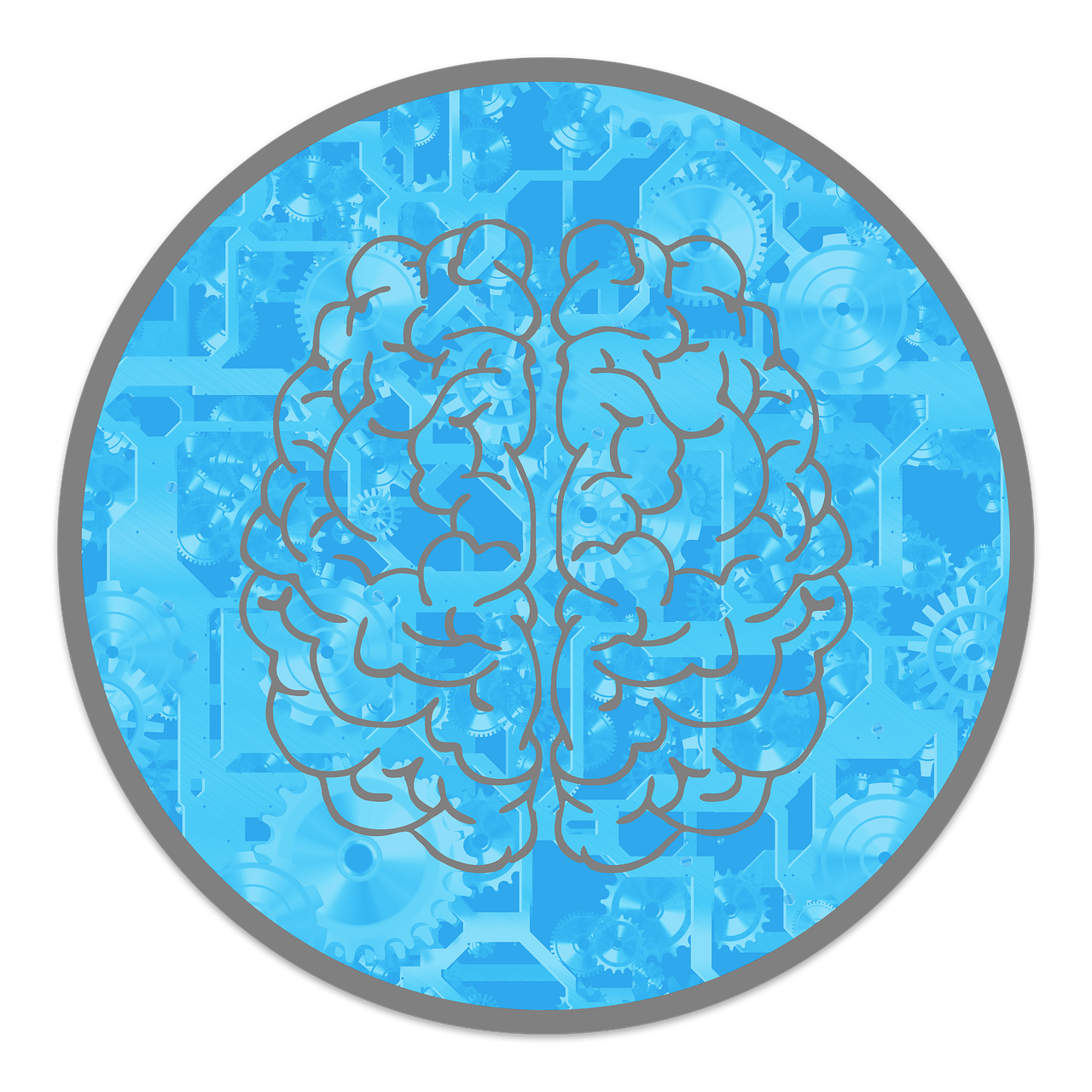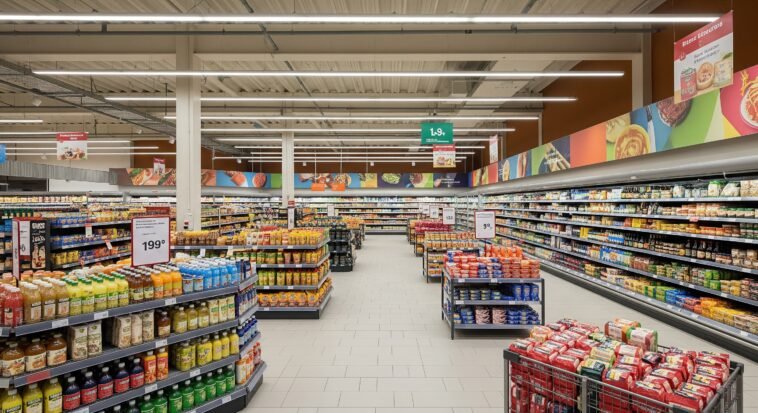
Every time you step into a supermarket, you’re walking into a place designed to make you spend more—on purpose.
From the layout to the product placement, it’s all backed by psychology.
Knowing these tricks helps you shop smarter and stick to what you actually need.
The Foundation of Supermarket Psychology
Supermarket setups aren’t random—they’re built on deep psychology and tested tricks from marketing and behavior science.
Think of it like this: every shelf, color, and product placement is planned to guide you a certain way.
Even after COVID-19 changed how stores operate, the core goal stayed the same—nudge you into buying more without you even realizing it.
Ever wonder why essentials like milk are always in the back? Or why candy’s right by the checkout?
That’s not by accident.
Stores design their layouts based on how we actually shop, not how we think we do.
It’s all about tapping into your habits, emotions, and split-second decisions while you’re just trying to grab a few things.

The Strategic Store Layout: A Psychological Journey
The entrance sets the mood
Right when you walk into a supermarket, the mind games begin.
Ever notice how the first thing you see is usually fresh fruits and veggies? That’s on purpose.
Bright colors, clean produce—it all signals “fresh” and “healthy.”
It makes you feel like you’re making good choices just by being there.
Here’s why that matters: when you feel good, you’re more likely to spend more.
It’s a trick called “priming.”
Your brain sees something nice and starts associating that good feeling with the rest of your shopping.
Stores use that emotional momentum to their advantage.
The decompression zone
After the entrance, there’s a small area that feels kind of…empty.
That’s the decompression zone.
It’s there to help you shift gears—from the outside world to shopping mode.
You get a second to slow down, grab a cart, and settle in.
Stores use this pause to reset your brain and make you more open to the stuff they want you to see next.
The Power of Product Placement
Eye-level = Buy-level
There’s a reason the stuff you notice first is usually the most expensive.
Supermarkets place the high-margin products right at adult eye level—about 5 feet off the ground.
That’s the sweet spot.
Kids’ stuff? Lower shelves, right where their eyes land.
It’s smart psychology. We naturally reach for what’s in front of us without thinking.
Now look down a shelf or two.
That’s where the cheaper or generic options usually sit.
But to get those, you’ve gotta bend, search, and think.
That little bit of effort?
It’s just enough to steer most people toward the pricier, easier-to-grab stuff.
The shopping cart trap
Stores don’t just place items smartly—they guide your path too.
Most supermarkets are designed so you move in a counterclockwise loop. It feels more natural for most people. And they don’t put milk or eggs up front on purpose.
You’ve gotta go deep into the store to get them.
Why? Because walking through all those aisles increases your chances of grabbing stuff you didn’t plan to buy.
Research shows the longer you stay in the store, the more emotional and impulsive your decisions get.
It’s not just shopping anymore—it’s a slow nudge into buying more.

The Psychology of Aisle Design
Narrow Aisles and Urgency
Wider aisles improve comfort and navigation, but narrower aisles can create a sense of urgency, leading to faster decision-making and more impulse buys.
Many supermarkets deliberately design narrower aisles to create a subtle sense of crowding and urgency.
This psychological pressure can lead to quicker purchasing decisions and reduced comparison shopping.
Endcap Displays: The Impulse Purchase Hotspots
The displays at the ends of the aisles—known in the supermarket business as end caps—are astute shopper traps.
Companies pay high prices to display their products there, since these are hot spots for impulse buying.
These prime real estate locations catch shoppers as they turn corners and navigate between aisles.
Endcap Displays – The ends of aisles (endcaps) feature high-margin or seasonal promotions, increasing visibility and sales.
Products placed on endcaps can see sales increases of up to 30% compared to their regular shelf position, making these displays incredibly valuable for both retailers and manufacturers.
Sensory Psychology: Engaging All Five Senses
Color tricks that work on your brain
Colors aren’t just for looks—they guide your choices.
Red is the loudest color in the store.
It grabs your attention fast, which is why you see it on sale signs and price tags.
Yellow and orange? They trigger hunger.
That’s why you’ll find them in bakery sections or hot food counters.
Green usually shows up in the produce area—it tells your brain, “fresh and healthy.”
Blue? Not so much.
Stores rarely use it for food because it’s linked to spoilage.
Weird, right? But it works.
How lighting changes what you see
Stores don’t just flip on lights to help you see better—they use light to make food look more appealing.
Meats get warm, reddish lighting to look fresher.
Fruits and veggies get clean, white light so they look crisp and full of color.
You’re not just seeing food—you’re seeing a version that’s been lit to look its best.
Music that makes you spend
Ever notice the music in the background? That’s not random.
Slow songs make you take your time, which means more browsing and more buying.
Faster music makes people move quicker, which can help during busy hours.
The key is to set a vibe that feels just right—not too loud, not too quiet.
Smells that sell
That fresh bread smell near the entrance? That’s on purpose.
Stores use scent to make you feel good and hungry.
The smell of coffee, bakery items, or even clean produce can trigger memories and cravings.
And cravings = more stuff in your cart.
The Checkout Zone: The Final Psychological Push
Impulse buys on purpose
By the time you reach the checkout, your cart’s mostly full.
But supermarkets know your brain’s tired from all that decision-making—and that’s when impulse kicks in.
That’s why they fill the checkout lane with cheap, easy-to-grab stuff like candy, gum, and mini products.
You didn’t come in for a chocolate bar, but now it’s right there, and your brain says, “Why not?” These low-cost items feel harmless, which makes them really easy to justify.
It’s not random—it’s a sales trick that works when your willpower’s running low.
Lines that feel shorter than they are
Even the way lines are set up is designed to steer your behavior.
Long lines create stress, and stress can push you into grabbing something just to feel better.
Some stores use winding, snake-style lines (called serpentine queues) to make the wait feel shorter, even if it’s not.
It keeps you moving a little, which feels better than standing still.

Protecting Yourself: Becoming a Conscious Consumer
Knowing the tricks is half the battle.
Here’s how to shop on your terms, not theirs.
Before you shop:
- Make a list. Break it down by section: produce, canned stuff, meats, breads. Keep it tight.
- Set a budget. Know your limit before you walk in.
- Eat first. Shopping hungry = bad idea. You’ll buy snacks you don’t need.
While shopping:
- Stick to the list. Don’t “just browse.” That’s where they get you.
- Shop with a plan. Give yourself a time limit.
- Watch those endcaps. Just because it’s on the corner doesn’t mean it’s a deal.
- Check unit prices. Sometimes the “bigger pack” costs more per use.
- Pause before you grab. Especially if it wasn’t on your list.
Strategic shopping habits:
- Shop less often. Fewer trips = fewer chances to overspend.
- Use cash. It sets a real spending boundary.
- Go solo. Friends or kids can sway your choices without you realizing.
- Look for candy-free checkouts. Fewer temptations at the finish line.
Final Thoughts: Shop With Eyes Wide Open
Supermarkets are designed to get you to spend more—from layout to lighting to music.
Once you see the psychology behind it, it’s easier to stay in control.
This stuff isn’t good or bad—it just is. The key is knowing it’s there.
That way, you decide what goes in your cart—not clever design.
Next time you shop, notice what’s happening around you.
The colors, the smells, the product placement—it’s all part of the plan. But now you’ve got the playbook. Use it.



